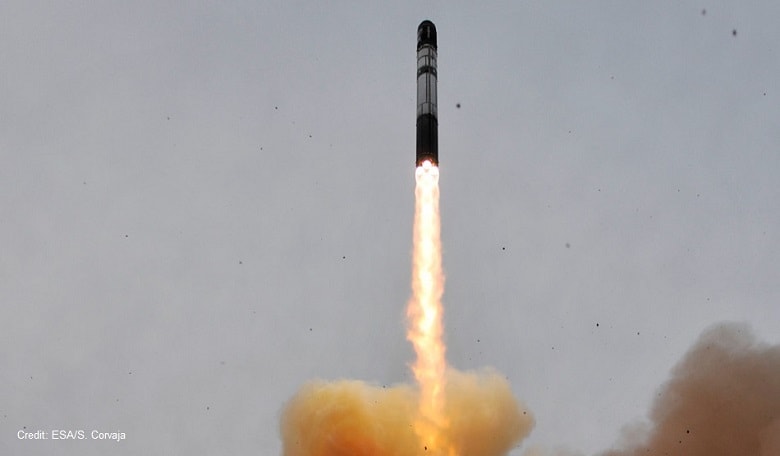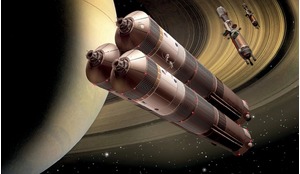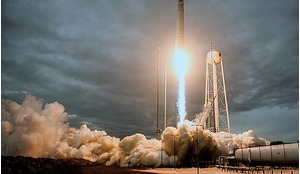The Russian space sector continues to be largely state-dominated but that could change in the near future. From small satellites to a lunar base, the Russian business sector has big plans, and could save governments a lot of money
When Russia switched to a market economy in 1992, it barely affected the Russian space sector as most organisations remained state-owned. Yet private initiative did arrive when small groups of enthusiasts created companies that could take on small commissions from the state space giants. Today, private companies are designing microsatellites, light rockets and even Moon habitats.
One of the first private Russian space endeavours was JSC NGO Lepton, led by its general director, Oleg Kazantsev. This small company began to make video cameras in the 1990s and realised it could also create spacecraft sensors, which it continues to do successfully. Another is ScanEx. Founded in 1989, ScanEx gathers, processes and sells satellite photographs.
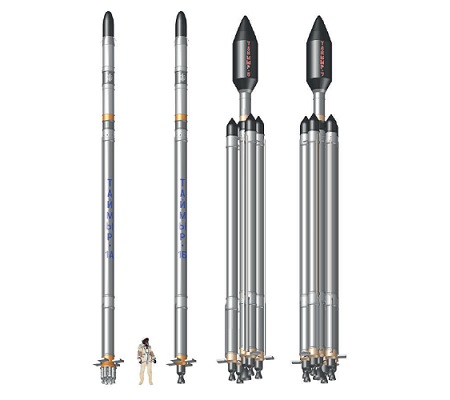 The Taimyr family of rockets (L-R: Taimyr-1A and Taimyr-1B, Taimyr-5, Taimyr-7) could slash waiting times for satellite launches to three months.
The Taimyr family of rockets (L-R: Taimyr-1A and Taimyr-1B, Taimyr-5, Taimyr-7) could slash waiting times for satellite launches to three months.
Another interesting trend of the 1990s was the participation of a group of Russian cosmic engineers in an international solar sail competition. They came up with a design for a spacecraft with a solar sail in the ‘80s, and in the ‘90s formed JSC Consortsium Kosmicheskaya Regata to commercialise the concept. They made a proposal to the Russian gas industry to light up the northern territories with a cosmic mirror based on solar sail technologies. The gas people didn’t take an interest in the mirror, but they were interested in satellite communication. In the end, part of the Kosmicheskaya Regata group, with Nikolay Sevastyanov at the helm, began developing the satellites. That process created what is now known as Gazprom Cosmic Systems, with Sevastyanov its chief designer.
In the 2000s, the Russian economy came back to life and private space start-ups started to gain ground in the West. It wasn’t long before they began dealing with Russia. First, MirCorp tried to organise the first tourist trip to the Mir station. Ultimately, the first private explorer - Dennis Tito - was taken by Space Adventures to the ISS.
Space Adventures’ Russian branch was headed up by Sergei Kostenko. He later founded Suborbital Corporation, which took part in the Ansari X PRIZE contest. Suborbital, together with the V.M. Myasishchev Experimental Engineering Plant, designed and built a life-size model of a tourist vehicle. The project did not secure funding and was abandoned. Yet Kostenko continued with space initiatives. In 2010, he founded Orbital Technologies, which, together with Energia, designed an orbital station. Sadly, the plans once again went nowhere.
A spinoff company RoboCV put a “seeing system” designed for a lunar rover in robots that could deliver cargo around warehouses. Today, its clients include Samsung
In the same decade, the Aviakosmicheskiye Systemy Company (ASC) was born. Its founder, Oleg Alexandrov, said in 2004 that he wanted to organise a trip to Mars and sell the TV rights. By 2005, ASC was concentrating on a more realistic project – satellites with commercial slogans on them. ASC got a license from Roscosmos and even built two satellites, ASC-1 and ASC-2, but closed without ever launching them.
The Skolkovo era
Things began looking up for Russian space start-ups by the end of the first decade of the new century.
In 2009, Selenokhod, headed by Nikolay Dzis-Voinarovsky, decided to participate in the Google Lunar X PRIZE contest for developing a private lunar rover. Selenokhod’s founders poured their own money into the project and began designing it.
In 2011, a space cluster was created using the Skolkovo innovation fund. Cluster residents got tax breaks and the opportunity to receive Skolkovo grants. Selenokhod was one of the first residents. But it didn’t get enough financing, retired from the contest and rebranded as Sensepace, which worked on docking systems for small spacecraft.
A Selenokhod spinoff, RoboCV, used a computer “seeing system”, originally designed for a lunar rover, to build robots that could deliver cargo around warehouses. Today, RoboCV is a successful enterprise with Samsung among its clients.
At the same time, money poured into private space initiatives in Russia. Sputnix secured millions of rubles, which it used to build and launch the first truly privately owned Russian satellite in 2014 – Tablesat-Aurora (Cazprom or Energia satellites aren’t truly private, since the Russian states owns some of their stock).
Tablesat-Aurora wasn’t the last Russian satellite. In 2014, two Perseus-M nanosatellites and a DX-1 microsatellite were launched by the satellite-building company Dauria. It had been founded by Mikhail Kokorich in 2012, when it attracted $30 million in investment money.
After the Skolkovo space cluster was founded, it turned out that Russia had many dozens of space start-ups. Among the many that build various subystems, such as Spektralaser, there are more ambitious projects. One is Pavel Pushkin’s Cosmokurs, which is currently building a spacecraft for suborbital tourism.
Lin Industrial is my joint project with Alexey Kaltushkin. We’re designing super-light rockets, which could launch satellites that weigh less that 180kg. We have secured big business funding – World of Tanks is one of our investors. We consider ourselves to be highly ambitious. After all, SpaceX also began its journey with a small rocket, Falcon 1.
The whole idea of super-light rockets is that today, small satellites are only being launched via big rockets. They share a ride with larger satellites, or join the company of many other ‘baby satellites’. The problem is that if a client needs a very particular orbit, it can take a long time – sometimes up to two years.
Small but perfectly formed
Our own rocket, Taimyr, will be more akin to a taxi than a bus - we’re planning to slash waiting times down to three months. We successfully launched an experimental rocket in July 2015 to test control systems and hope to send Taimyr into space in 2020.
We’re working on many varieties of the rocket, but will all of them find their niches? We think that the market is there and will only keep growing. The O2 Consulting agency predicts there’ll be 195 spacecraft weighing less than 500kg in space by 2020, and Spaceworks is even more optimistic. It forecasts 543 spacecraft with masses from 1 to 50kg.
Mini, micro and nano satellites continue to develop and Russia will follow the general trend. Dauria and Sputnix are making micro and nanosatellites. Tablesat-Aurora, Perseus-M, and DX-1 are already up in the sky. And Russian Cosmic Systems has launched TNS-0 №1, which weighs just 5 kg.
Russian institutions of higher learning are also catching up. The Mozhaisky Academy has launched several satellites – the latest weighed just 73kg. Moscow State University launched Tatiana-1 (32kg) and Tatiana-2 (90kg) while the Ufa State Aviation and Technology University launched UGATU-SAT (40kg). The Moscow Aviation Institute launched MAK-1 and MAK-2 (just 20kg each) and created, together with Yugo-Zapadny State University, the Radioscaph series (weighing up to 100 kg).
Nano and microsatellites in Russia are truly a growth area. Upcoming projects include new Radioscaphs, a second Bauman University satellite, private projects by Dauria together with the Russian Academy of Sciences, and Sputnix and ScanEx projects for the Russian Emergencies Situation Ministry for monitoring disasters.
The Mayak satellite will unfurl a metallic reflector in orbit and, for a few months, become the brightest spot in the night sky
Last but not least, there’s Yaliny, which aims to be a satellite internet service provider competing head-to-head with Richard Branson’s OneWeb, as well as Google, Fidelity and SpaceX. Yaliny will deliver low-cost internet using 135 microsatellites and 9 reserve microsatellites. It’s headed up by Russian businessmen Vadim Teplyakov and Nikita Sherman, based in Hong Kong, and has already secured $2 million in investment.
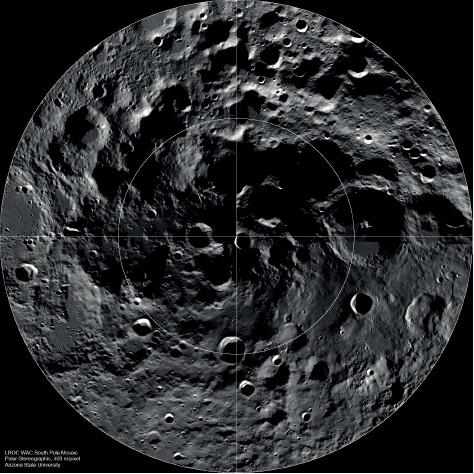 The Moon’s south pole, as observed by Lunar Reconnaissance Orbiter – a good place to set up camp?
The Moon’s south pole, as observed by Lunar Reconnaissance Orbiter – a good place to set up camp?
The American company SpaceX is interested in Mars, but we at Lin Industrial believe that widespread conquest of space should start with the Moon. We have designed a first-stage Moonbase with space for two crew members, and a second-stage Moonbase with space for four. By current estimates, our project should cost just 550 billion rubles. By comparison the Russian space agency, Roscosmos, and the Russian Academy of Sciences want a total of two trillion by 2025 to settle on the Moon.
We believe that what makes our project special is that we plan to use only existing rocket technology and materials that can be built within the next five years. We’re thinking of using a modernised version of the Angara-A5 rocket for launch (an instant money-saver) and using the Soyuz spacecrafts as our foundation. The landing module can be developed using existing Fregat technology.
The Moon on a budget
Thirteen heavy rocket launches would be required to build the base, and a total of 37 launches within five years to support it. We want to build the first Moonbase on the Malapert mountain, close to the lunar south pole. It has good conditions for communications and gets a lot of sunlight. Nearby craters could potentially contain ice beneath a surface of rock.
We want the project to take 10 years after it is approved – with five years devoted to base creation and operational crew work. The Russian state has not ignored our suggestions - it has already shelved plans to build a new heavy rocket for colonising the Moon.
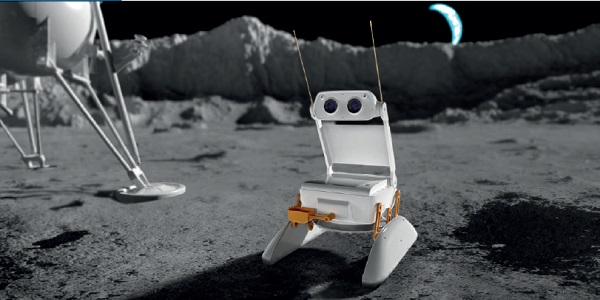 The Selenokhod rover never made it to the Moon, but its eyesight now helps robots navigate warehouses
The Selenokhod rover never made it to the Moon, but its eyesight now helps robots navigate warehouses
Some interesting Russian space organisations have nothing to do with Skolkovo. For example, there is the Mnogotselevye Reaktivniye Platformy (MRP) group of space enthusiasts, which created and tested two hybrid rocket engines (which use rocket propellant in two different phases; one solid, the other solid and liquid) and rockets in 2012. That is a major achievement, especially if we remember that hybrid engines, although designed in the USSR, have not been used in Russia since 1934.
In the US, in contrast, hybrid engines help drive the private space initiative. It is a shame indeed that MRP have not been able to find funding for their project.
Meanwhile, the famous Russian venture capitalist Alexander Galitsky has decided he will not invest in domestic projects. Instead he is sponsoring B612, mainly based in the US and concentrating on protecting Earth from the asteroid threat.
There is also another interesting Russian space enthusiast group, Tvoi Sektor Cosmosa (literally: Your Sector of the Cosmos), headed by former Dauria chief engineer Prof Alexander Shayenko.
Tvoi Sektor is currently at work on the Mayak satellite and looking for donations for a launch on the Dnepr rocket. The plan is for Mayak to unfurl a metallic reflector in orbit in autumn 2016 and, for a few months, to become the brightest spot in the night sky.
The private space initiative in Russia may not be nearly as well developed as in the US, but in spite of this shortcoming it continues to make gains. If all goes according to plan, private Russian space initiatives will be making big headlines five years from now.





